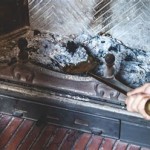Tile Over Marble Fireplace: Considerations and Procedures
Renovating a fireplace often involves considering various options to update its aesthetic appeal and functionality. One such option is tiling over an existing marble fireplace. This approach can provide a fresh look while potentially saving on the costs associated with completely removing and replacing the existing marble surround. However, tiling over marble requires careful planning, proper preparation, and the use of appropriate materials to ensure a durable and aesthetically pleasing result.
Before embarking on this project, several factors must be evaluated. The condition of the existing marble, the desired aesthetic outcome, and the long-term maintenance considerations all play a crucial role in determining the feasibility and success of tiling over marble. Failure to adequately address these considerations can lead to issues such as tile detachment, cracking, and an overall unsatisfactory appearance.
Assessing the Existing Marble Fireplace
The initial step in determining the feasibility of tiling over marble is a thorough assessment of the existing marble fireplace surround. This assessment should focus on several key areas:
Structural Integrity: The marble must be structurally sound and free from significant cracks, chips, or loose pieces. Any existing damage should be addressed before proceeding. Small cracks may be filled with epoxy, while larger cracks or severely damaged sections may necessitate replacement before tiling. Attempting to tile over unstable marble will inevitably lead to problems with the newly installed tile surface.
Surface Condition: The surface of the marble should be clean and free from any coatings, sealants, or residues. These substances can impede the adhesion of the thin-set mortar used to bond the tiles. Thorough cleaning with a degreasing agent is often necessary to remove any oily residues. In some cases, mechanical abrasion, such as sanding, may be required to remove stubborn coatings.
Levelness and Flatness: The marble surface should be relatively level and flat. Significant unevenness will require the use of a self-leveling compound to create a uniform surface for tiling. Failure to address unevenness will result in an uneven tile surface, which can be both unsightly and functionally problematic.
Expansion and Contraction: Marble, like all natural stone, is subject to expansion and contraction due to temperature fluctuations. It is crucial to account for this movement when tiling over marble. Using flexible thin-set mortar and grout can help accommodate these movements and prevent cracking. Additionally, expansion joints should be incorporated, particularly in larger installations, to allow for movement without stressing the tile or marble.
Preparing the Marble Surface for Tile Adhesion
Proper preparation of the marble surface is paramount to ensuring a strong and lasting bond between the marble and the tile. The following steps are essential:
Cleaning and Degreasing: Thoroughly clean the marble surface with a degreasing agent to remove any dirt, oil, or other contaminants. Rinse thoroughly with clean water and allow the surface to dry completely. This step is critical for ensuring proper adhesion of the primer and thin-set mortar.
Mechanical Abrasion (Optional): If the marble has a very smooth or polished surface, consider lightly abrading it with sandpaper or a diamond-grit sanding pad. This will create a rougher surface that provides a better mechanical bond for the primer and thin-set mortar. Be careful not to over-sand the marble, as excessive abrasion can damage the surface.
Priming: Apply a high-quality bonding primer specifically designed for use on non-porous surfaces like marble. The primer will create a chemical bond between the marble and the thin-set mortar. Follow the manufacturer's instructions for application and drying time. Choose a primer that is compatible with both the marble and the chosen thin-set mortar. Some primers are specifically formulated for use with certain types of tile, such as porcelain or ceramic.
Leveling (If Necessary): If the marble surface is significantly uneven, apply a self-leveling compound to create a flat and level surface for tiling. Follow the manufacturer's instructions for mixing and application. Allow the self-leveling compound to dry completely before proceeding to the next step. The type of self-leveling compound will depend on the extent of the leveling required. For minor imperfections, a thin layer of leveling compound may suffice. For more significant unevenness, a thicker layer may be necessary.
Selecting Appropriate Materials and Techniques
Choosing the correct materials and employing proper tiling techniques are essential for a successful tile-over-marble project. The following considerations are crucial:
Thin-Set Mortar: Use a high-quality, polymer-modified thin-set mortar specifically designed for use on non-porous surfaces and for installing tile over existing surfaces. These mortars are formulated to provide superior adhesion and flexibility. Avoid using standard thin-set mortars, as they may not bond properly to the marble surface. Consider using a rapid-setting thin-set mortar to speed up the project. However, be aware that rapid-setting mortars have a shorter working time, requiring careful planning and execution.
Tile Selection: Choose tiles that are appropriate for a fireplace surround. Consider factors such as heat resistance, durability, and aesthetic appeal. Porcelain tiles are a popular choice due to their durability, low water absorption, and wide range of styles. Natural stone tiles can also be used, but they may require sealing to protect them from staining and moisture. The size and weight of the tiles should also be considered. Larger, heavier tiles may require additional support and a thicker layer of thin-set mortar.
Grout: Use a high-quality, epoxy grout or a polymer-modified cement grout. Epoxy grout is more resistant to staining and moisture, making it a good choice for high-traffic areas and areas that are exposed to water. Polymer-modified cement grout offers a good balance of performance and affordability. Choose a grout color that complements the tile and marble. Sealing the grout after installation is recommended to protect it from staining and moisture.
Expansion Joints: Incorporate expansion joints into the tile installation to accommodate movement due to temperature fluctuations. These joints are typically filled with a flexible sealant that allows for expansion and contraction without cracking the tile or grout. Expansion joints should be placed along the perimeter of the fireplace surround and at regular intervals within the tiled area. The placement and spacing of expansion joints will depend on the size of the installation and the type of tile used.
Tiling Techniques: Use proper tiling techniques, such as back-buttering the tiles and using a notched trowel to apply the thin-set mortar evenly. This will ensure proper adhesion and prevent voids beneath the tiles. Use tile spacers to maintain consistent grout lines. Regularly check the level and alignment of the tiles during installation. Cleaning the excess thin-set mortar from the tile surface as you go. This will make the grouting process easier and prevent the mortar from hardening on the tile surface.
Sealing (If Necessary): Certain tile materials, such as natural stone, may require sealing to protect them from staining and moisture. Apply a high-quality sealant according to the manufacturer's instructions. Sealing the grout is also recommended, regardless of the type of grout used. Regular re-sealing may be necessary to maintain the protection. Choose a sealant that is appropriate for the type of tile and grout used. Some sealants are designed for specific types of stone or grout.
After the tile has been installed and the grout has cured, inspect the installation for any imperfections or areas that need touch-up. Addressing these issues promptly will help ensure the long-term durability and aesthetic appeal of the tiled fireplace surround.
By carefully considering these factors, preparing the marble surface properly, and using appropriate materials and techniques, it is possible to successfully tile over an existing marble fireplace and achieve a beautiful and durable result. However, if there is any doubt about the feasibility of the project or the ability to perform the work properly, it is always best to consult with a qualified tile contractor. A professional can assess the situation and provide expert advice and installation services.

How To Tile Over A Marble Fireplace Surround Surrounds

How To Tile Over A Marble Fireplace Surround Porch Daydreamer

Diy Tile Over Marble Fireplace Makeover Redo Remodel

How To Add Herringbone Marble Tile A Fireplace Southern Hospitality

Marble Fireplace Makeover Centsational Style

How To Tile Over A Marble Fireplace Surround Porch Daydreamer

Fireplace Makeover How To Tile Over A Surround Love Remodeled

Our 200 Marble Fireplace Makeover Young House Love

How To Seal Marble Shine Your Light

How To Tile Over A Marble Fireplace Surround Porch Daydreamer








